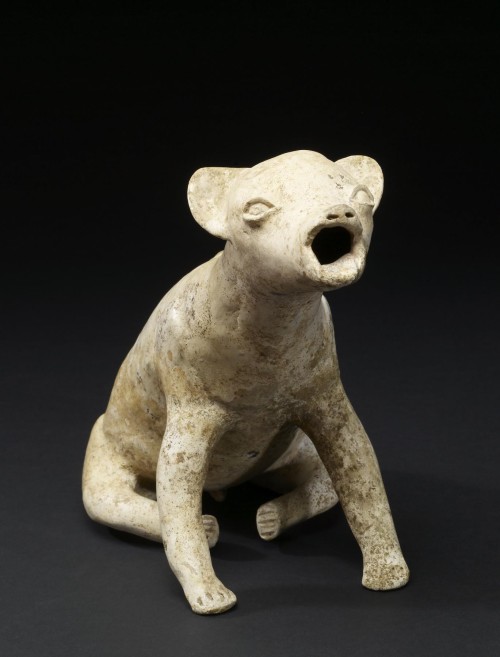Colima - Blog Posts
Los perros de Colima

Howling Dog Effigy, Jalisco, 300 BC-AD 200.
Why were dogs so significant to the Mexica?
Dogs were associated with the god of death, Xolotl, among the Mexicas of the highlands of Mexico. Both a dog and Xolotl were thought to lead the soul to the underworld. The skinny body and white hue of the shown dog represented above may have underworld connotations, connecting it to this belief. Xolotl was also associated by the Mexica with the planet Venus as the evening star, and was portrayed with a canine head.
The dog’s special relationship with humans is highlighted by a number of Colima dog effigies wearing humanoid masks. This curious effigy type has been interpreted as a shamanic transformation image or as a reference to the modern Huichol myth of the origin of the first wife, who was transformed from a dog into a human. However, recent scholarship suggests a new explanation of these sculptures as the depiction of the animal’s tonalli, its inner essence, which is made manifest by being given human form via the mask.
The use of the human face to make reference to an object’s or animal’s inner spirit is found in the artworks of many ancient cultures of the Americas, from the Inuit of Alaska and northern Canada to peoples in Argentina and Chile. (Walters)
On the subject of the significance of dogs, and dog effigies wearing humanoid masks, check out this post from a while back of ‘examples of dogs represented in ancient Mexican art.’ The final artefact here is from Colima, and shows a dog wearing a human mask.
Courtesy of & currently located at the Walters Art Museum, Baltimore, USA, via their online collections, 2009.20.148.